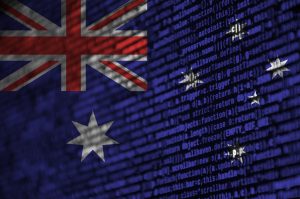In the past week the city of Melbourne has experienced a series of often violent protests over the state of Victoria’s current COVID-19 restrictions. The protests were ignited by the temporary shutdown of the construction industry due to the spread of the virus among its workers. However, the protests seem to have been driven not entirely by construction workers themselves, but also by people with different political agendas trying to pass themselves off as construction workers.
There are obvious frustrations at the current restrictions placed on people’s movement and on the normal operation of some businesses. No one is happy about this, and there is no doubt that this is proving incredibly difficult for some people. However, there is a broad understanding from most of the Australian public that these restrictions are in place in order to avoid considerable deaths and prevent the health care system from being overwhelmed.
However, there are groups and individuals that have sought to exploit people’s fears and frustrations around the pandemic through the spread of false and misleading information. These people have seen the pandemic as an opportunity to create social unrest, whether by fermenting suspicion toward vaccines or through wilder conspiracy theories about the pandemic being fabricated to justify a government power grab.
It is obvious that we now live in an age where it is incredibly easy to spread both misinformation and disinformation. It is also easy for people to now exist almost entirely within a bubble of content that is disconnected from any verifiable reality. This disconnection from reality may only be producing relatively small-scale social unrest in Australia at the moment, but as we have seen with the January 6 insurrection in Washington D.C., there is the potential for this agitation to be harnessed by political figures for far more destructive action.
Admittedly, there is a higher degree of public trust in Australia’s institutions than is present in the United States. In general, Australians expect their governments to be competent, not distant, and the country’s political debates are centered on making sure politicians live up to this expectation. The hostility toward science and evidence that exists within the Republican Party and its media affiliates is far less present in Australia.
However, this doesn’t mean that more agitated and extreme political ideas and actions don’t exist within the country. They clearly do, and even if these groups cannot win conventional political power they remain dangerous social forces with the potential to expand their influence. This is why Australia shouldn’t be complacent about the effect of misinformation and disinformation on the country’s social stability.
While Australia’s political terrain might be different to the United States, the cultural terrain is similar enough for influences from its current political instability to take root. The presence of Trump flags at these Melbourne protests is an indication of the transnational nature of his personality cult, and how he represents a sense of resentment toward the complexity of the modern world that is highly relatable for people outside of America as well as within.
This resentment is something that the pandemic has only exacerbated. Resistance toward pandemic restrictions and paranoia about vaccines represents a need to find some kind of personal control within this complexity. These feelings have proven very easy to exploit by actors looking to sow discord.
In response to these forces there has been some recent global advocacy for restricting the ability of the big technology companies to have their platforms used to spread false and misleading information. Yet states restricting the free flow of information has its own negative implications.
Finland has taken a more sophisticated and robust approach to the problem, giving people the intellectual tools to be able to distinguish between fact and fiction.
As part of its broader national security strategy, Finland has been able to develop an education system that seeks to develop children’s capabilities to distinguish between quality and poor quality information, identify actively deceitful information, and become aware of the way language can be used to manipulate both material and people. These kinds of information literacy and critical thinking skills have become a cross-subject component of the country’s national curriculum.
The combination of a global health emergency and an informational ecosystem where false and misleading information can thrive has proven to be a lethal cocktail. Australia has weathered this terrain reasonably well, but as these recent protests have demonstrated the country is not immune to social unrest fueled by grievance, paranoia, conspiracy, and actors working to intentionally deceive. Australian governments should now realize that a key defense to these disruptions is a well-educated public with the critical and rational capabilities to be less susceptible to informational attacks.

































